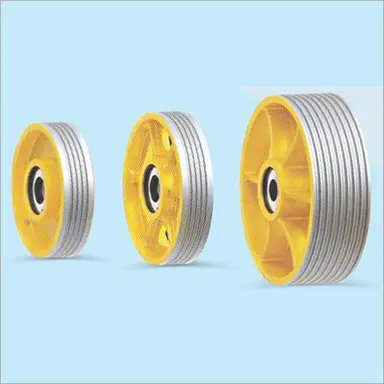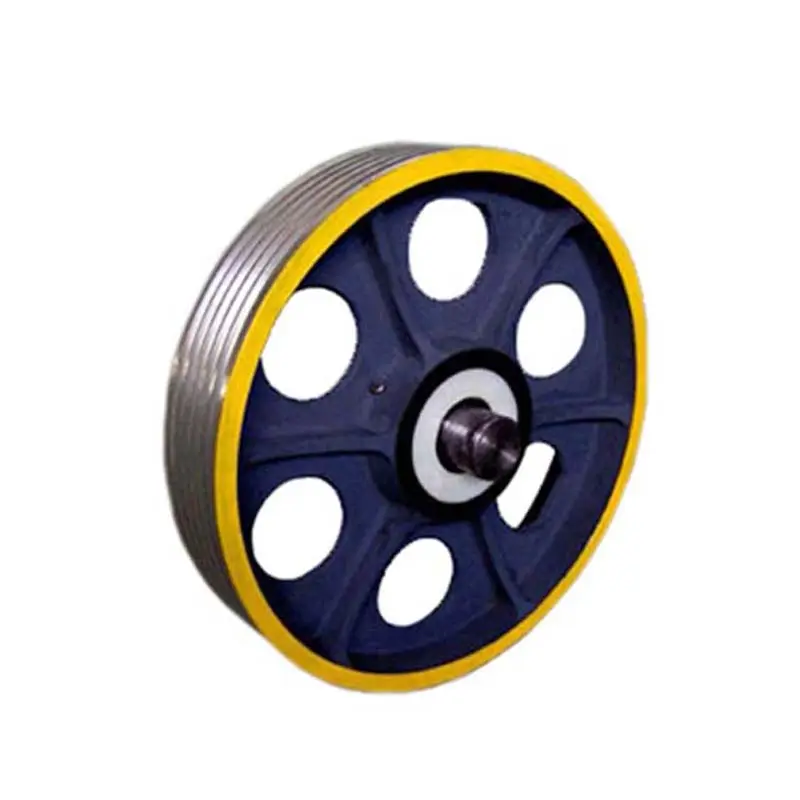Product Description
OEM Engineering Machinery Equipment Accessory-Pulley
Description
|
Name |
Pulley |
|
OEM |
Acceptable |
|
Materials |
EN-GJL-250&EN-GJS-450-10, etc |
|
Weight |
20Kg-100Kg |
|
Manufacturing Process |
Lost foam casting, CNC machining, CMM inspection, Surface treatment |
|
Casting tolerance |
ISO8062 ISO2768 |
|
Inspection items and methods |
Chemical composition: Spectral analysis |
|
Application |
OEM Engineering Machinery Equipment |
|
Package |
Plywood case |
|
Payment terms |
T/T, L/C |
OEM/ODM Request Is Very Welcome!
Production Process
The scale production of vehicle weight is realized by automatic production line, then through machining and accurate inspection, eventually the products come up to good surface quality, highly dimensional accuracy, accurate weight and the best comprehensive cost performance.
Before product development, we will evaluate and highlight the technical requirements, including: material, surface treatment, hardness, weight, important technical requests and customer’s special requests. Meanwhile, we will establish files for each customer, including: technical documents, communication records and the time of technique requests changes, this will help us to provide guarantee for product inspection.
Inspection
We have complete testing instruments and quality control means, thus we can control the quality of products from raw materials to finished products timely and effectively. Our commonly used inspection equipment are: Spectral analyzer, Hardness tester, Micro scope, Roughness tester, CMM, Projector and other gages and tools.
Molds
Mold is the key to producing castings, we have our own mold workshop and mold design engineer, we can ensure the mold development and the rigor of production, manufacturability and the rapidity of mold development, thus we can provide the best guarantee of product development.
Package
According to different products, we’ll choose the most suitable package way for our customers.
Company
About Us
SYI provides OEM Casting & Forging services based on your drawings , samples , or just an idea ! After technical analysis and individual QCP for each project , the most suitable manufacture process will be recommended.
CHINAMFG starts our business since 1990 ‘ s of machined and un-machined in a variety of industry . We have over 100,000 products till now with the support of a specialized team including 50 engineers , inspectors and customer services .
Cooperative Brand
/* January 22, 2571 19:08:37 */!function(){function s(e,r){var a,o={};try{e&&e.split(“,”).forEach(function(e,t){e&&(a=e.match(/(.*?):(.*)$/))&&1
| Material: | En-Gjl-250&En-Gjs-450-10 |
|---|---|
| Name: | OEM Pulley |
| OEM: | Acceptable |
| Materials: | En-Gjl-250&En-Gjs-450-10 |
| Transport Package: | Standard Export Package or as Per Your Requirement |
| Specification: | Customized |
| Customization: |
Available
| Customized Request |
|---|
How does the quality and precision of lifting pulleys impact the accuracy of lifting operations?
The quality and precision of lifting pulleys have a direct impact on the accuracy of lifting operations. The design, construction, and performance of pulleys influence the control, stability, and reliability of the lifting process. Here’s a detailed explanation of how the quality and precision of lifting pulleys impact lifting operations:
1. Load Control: High-quality lifting pulleys are designed to provide precise and smooth load control. They enable operators to accurately adjust the speed, direction, and position of the load during lifting operations. Pulleys with precise load control capabilities ensure that the load is lifted, lowered, or moved with accuracy and minimal deviation, resulting in precise positioning and placement of the load.
2. Stability and Balance: Precision-engineered lifting pulleys contribute to the stability and balance of the lifting system. They are designed to minimize vibrations, wobbling, or oscillations during the lifting process. This stability ensures that the load remains balanced and steady, reducing the risk of accidents, load shift, or damage to the lifting equipment. The quality of pulleys directly affects the system’s ability to maintain stability and balance throughout the lifting operation.
3. Efficiency and Smooth Operation: High-quality lifting pulleys are engineered to minimize friction and resistance, allowing for efficient and smooth operation. They are often equipped with low-friction mechanisms, such as ball bearings, to reduce energy loss and enable smooth rotation. Pulleys that operate smoothly require less force to lift the load, leading to improved energy efficiency and precise control over the lifting operation.
4. Reduced Jerks and Sudden Movements: Lifting pulleys that exhibit high precision and quality help prevent sudden jerks or uncontrolled movements during lifting. They ensure that the load is lifted or lowered smoothly without abrupt starts or stops. This reduces the risk of shock loads, equipment damage, and potential injury to workers. By minimizing jerks and sudden movements, precise pulleys contribute to the overall safety and accuracy of lifting operations.
5. Load Distribution: Quality lifting pulleys distribute the weight of the load evenly across the lifting system. They enable the load to be spread over multiple ropes or cables, ensuring a well-balanced distribution of forces. This even load distribution minimizes stress on individual components, enhances the system’s stability, and improves the accuracy of load handling and positioning.
6. Minimal Deflection and Stretching: High-quality lifting pulleys are designed to minimize deflection and stretching of the ropes or cables during lifting operations. They ensure that the cables remain aligned and experience minimal elongation or deformation. This reduces the risk of inaccurate load positioning caused by sagging or stretching of the lifting elements, ensuring precise and consistent lifting performance.
7. Reliability and Longevity: The quality of lifting pulleys directly impacts their reliability and longevity. Well-designed pulleys constructed with durable materials and precise manufacturing techniques are more likely to withstand heavy loads, frequent use, and harsh operating conditions. Reliable pulleys contribute to the accuracy of lifting operations by minimizing the chances of unexpected failures or malfunctions that can compromise the precision and safety of the lifting process.
8. Compatibility and
Can lifting pulleys be used in both industrial and construction lifting equipment?
Yes, lifting pulleys can be used in both industrial and construction lifting equipment. Lifting pulleys are versatile components that play a crucial role in various lifting applications across different industries. They provide mechanical advantage, facilitate load distribution, and enable efficient lifting operations. Here’s how lifting pulleys are utilized in industrial and construction lifting equipment:
In Industrial Lifting Equipment:
Lifting pulleys are commonly employed in industrial settings for a wide range of lifting tasks. Industries such as manufacturing, warehousing, logistics, and material handling rely on lifting pulleys to move heavy loads, machinery, or materials. Some examples of industrial lifting equipment that utilize pulleys include:
1. Overhead Cranes: Overhead cranes are extensively used in industrial facilities to lift and move heavy loads horizontally. These cranes incorporate lifting pulleys and a trolley system to support the load and provide controlled movement. The pulleys in overhead cranes distribute the load weight and help in efficient load handling.
2. Gantry Cranes: Gantry cranes are similar to overhead cranes but operate on a different supporting structure. They are commonly used in construction sites, shipyards, or outdoor industrial areas. Gantry cranes utilize lifting pulleys to raise and lower heavy loads, enabling versatile lifting operations.
3. Forklifts and Lift Trucks: Forklifts and lift trucks are widely used in warehouses, distribution centers, and manufacturing facilities for material handling tasks. These vehicles often incorporate lifting pulleys in their mast systems to raise and lower loads efficiently.
4. Hoists and Winches: Hoists and winches are utilized in various industrial applications for lifting and pulling operations. They employ lifting pulleys to support the load and provide mechanical advantage, making it easier to lift heavy objects or move loads vertically or horizontally.
In Construction Lifting Equipment:
Lifting pulleys are also extensively utilized in construction lifting equipment to handle heavy loads, equipment, and materials at construction sites. Construction machinery and equipment often incorporate lifting pulleys in their design to enable efficient lifting and positioning operations. Some examples include:
1. Tower Cranes: Tower cranes are commonly seen at construction sites and are used for lifting and moving heavy materials and equipment vertically and horizontally. These cranes employ lifting pulleys in their lifting mechanisms, allowing for precise control and efficient material handling.
2. Mobile Cranes: Mobile cranes, such as truck-mounted or rough-terrain cranes, are versatile lifting equipment used in construction projects. These cranes utilize lifting pulleys in their boom systems to lift heavy loads and position them with accuracy.
3. Elevators and Lifts: In construction projects involving multi-story buildings, elevators and lifts are essential for vertical transportation. Lifting pulleys are integral components of elevator systems, facilitating smooth and controlled movement between floors.
4. Concrete Pumps: Concrete pumps are used to transport and pour concrete in construction projects. These pumps employ lifting pulleys to lift and position heavy concrete-filled hoses or booms, enabling precise pouring and placement of concrete.
Lifting pulleys are versatile components that can be customized to meet the specific requirements of industrial and construction lifting equipment. They provide mechanical advantage, load distribution, and efficient lifting capabilities in a wide range of applications. By incorporating lifting pulleys, both industrial and construction lifting equipment can operate safely and effectively, handling heavy loads and materials with ease.
In which industries and tasks are lifting pulleys commonly used for material handling?
Lifting pulleys are commonly used for material handling in various industries and tasks. Here are some examples:
1. Construction: In the construction industry, lifting pulleys are used for hoisting and moving heavy construction materials, such as steel beams, concrete blocks, and scaffolding components. They are employed in cranes, hoists, and other lifting equipment to facilitate the vertical and horizontal movement of materials at construction sites.
2. Manufacturing: Lifting pulleys play a crucial role in manufacturing facilities for material handling tasks. They are used in assembly lines, warehouses, and distribution centers to lift and transport raw materials, components, and finished products. Lifting pulleys are often integrated into conveyor systems, overhead cranes, and lifting devices to streamline the movement of materials throughout the manufacturing process.
3. Shipping and Logistics: In the shipping and logistics industry, lifting pulleys are utilized for loading and unloading cargo from ships, trucks, and airplanes. They are employed in cranes, gantries, forklifts, and other material handling equipment to efficiently move containers, pallets, and packages within ports, warehouses, and transportation hubs.
4. Mining and Quarrying: Lifting pulleys are essential in mining and quarrying operations for extracting and transporting minerals, ores, and aggregates. They are used in conveyor systems and mining equipment to lift and transfer heavy loads, such as rocks, coal, and bulk materials. Lifting pulleys in mining applications are designed to withstand harsh environments and heavy-duty usage.
5. Agriculture: Lifting pulleys find application in the agricultural industry for material handling tasks. They are used in farming operations to lift and move bales of hay, bags of feed, and agricultural equipment. Lifting pulleys are often integrated into tractor-mounted loaders, barn hoists, and other agricultural machinery to assist in the handling of various farm materials.
6. Warehousing and Distribution: In warehousing and distribution centers, lifting pulleys are extensively used for material handling tasks. They are employed in forklifts, pallet jacks, and automated storage and retrieval systems to lift and transport goods within the facility. Lifting pulleys enable efficient loading and unloading of palletized and packaged products, optimizing the flow of materials in the supply chain.
Lifting pulleys are versatile tools that are widely employed in industries where material handling is a critical aspect of operations. From construction and manufacturing to shipping and logistics, mining and quarrying, agriculture, and warehousing, lifting pulleys enhance efficiency and safety in the movement of materials across various sectors.
editor by CX
2024-04-13




